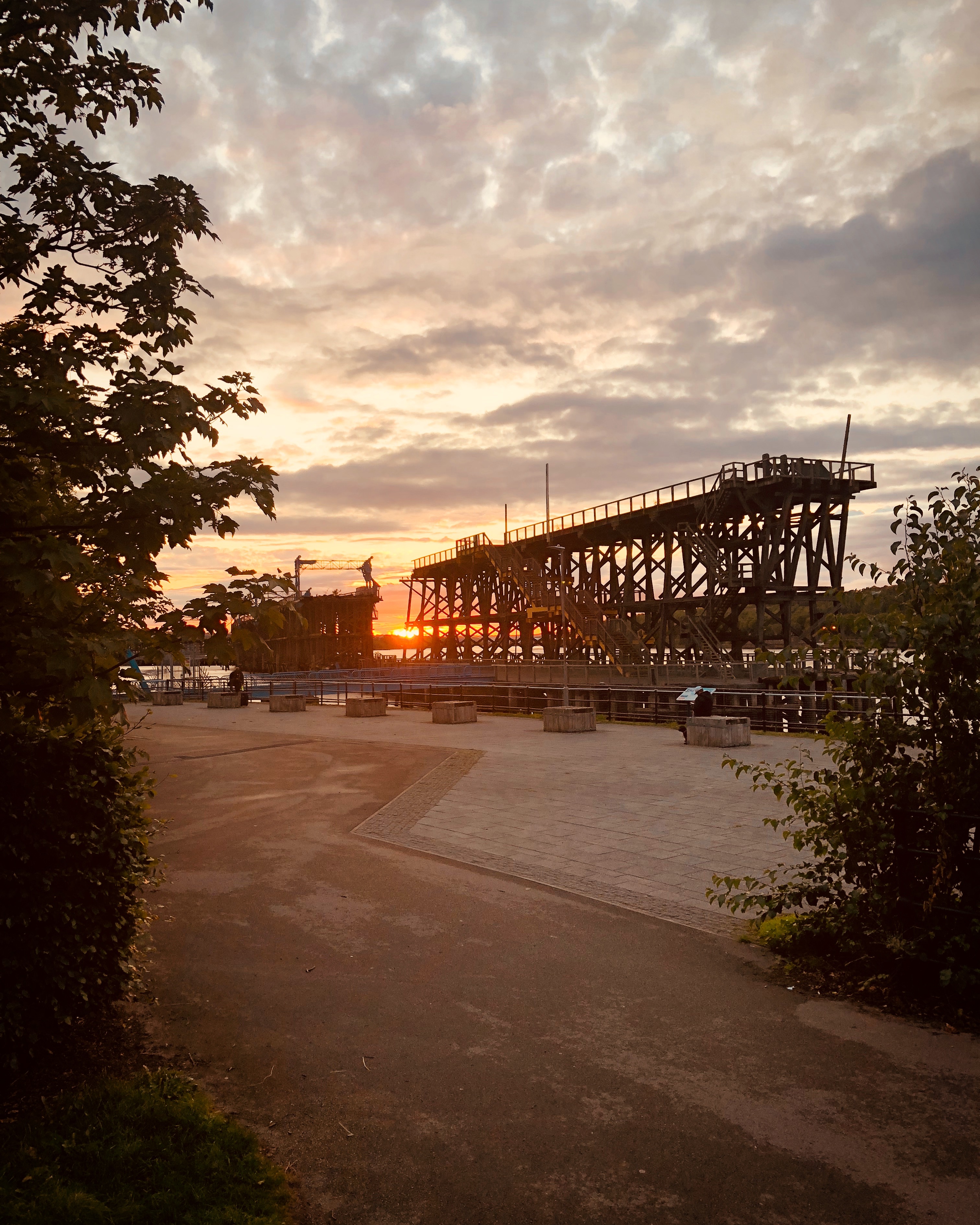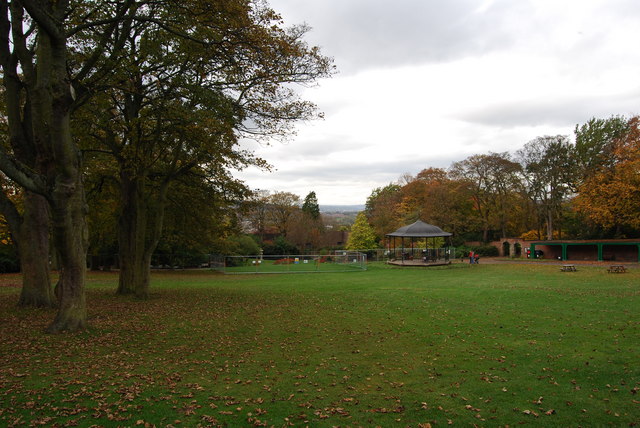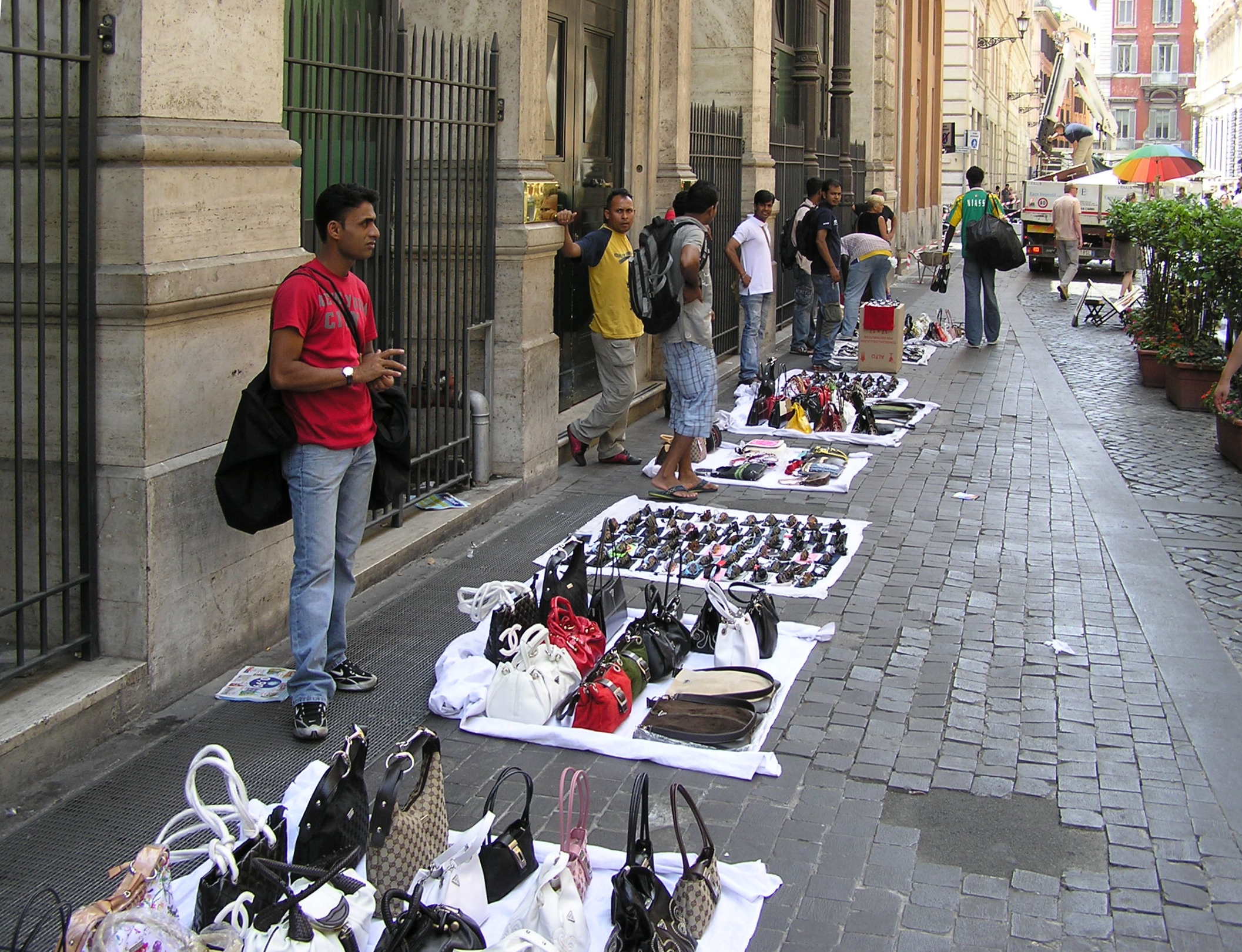|
Carr Hill
Carr Hill is a suburb in the Metropolitan Borough of Gateshead in Tyne and Wear, England. It is bordered by Felling to the north, Sheriff Hill to the south, Windy Nook to the east and Deckham to the west. It lies south of Gateshead, south of the city of Newcastle upon Tyne and north of the historic City of Durham. Once a village in County Durham, it was incorporated into the Metropolitan Borough of Gateshead by the Local Government Act 1972 on 1 April 1974. One of the less populous of the former villages that comprise the metropolitan borough, Carr Hill has a long history and was first developed by the Romans. During the Industrial Revolution it became the centre of pottery making in Tyneside, and numerous stone quarries, glass makers and windmills were set up. It also had a large reservoir providing water to several areas of Gateshead and Newcastle upon Tyne. Industrial decline from the turn of the 20th century, coupled with the building of Gateshead's first council estat ... [...More Info...] [...Related Items...] OR: [Wikipedia] [Google] [Baidu] |
Metropolitan Borough Of Gateshead
The Metropolitan Borough of Gateshead is a metropolitan borough in the metropolitan county of Tyne and Wear, North East England. It includes Gateshead, Rowlands Gill, Whickham, Blaydon, Ryton, Felling, Pelaw, Dunston and Low Fell. The borough forms part of the Tyneside conurbation, centred on Newcastle upon Tyne. It is bordered by the local authorities areas of Newcastle upon Tyne to the north, Northumberland to the west, County Durham to the south, Sunderland to the south-east, and South Tyneside to the east. The borough had a population of over 202,000. History The district is located within the historic county boundaries of County Durham. It is south of the River Tyne, the historic county boundary between Northumberland and Durham. The metropolitan borough was formed in 1974 through the merger of the county borough of Gateshead with the urban districts of Felling, Whickham, Blaydon, Ryton and part of Chester-le-Street Rural District, with the borough placed in the new ... [...More Info...] [...Related Items...] OR: [Wikipedia] [Google] [Baidu] |
Dunston, Tyne And Wear
Dunston is a western area of the town of Gateshead on the south bank of the River Tyne, in the Metropolitan Borough of Gateshead, North East England (into which it was absorbed in 1974). Dunston had a population of 18,326 at the 2011 Census. History It has been speculated that Dunston started its existence as a farm or estate of a man named Dunn. Historically part of County Durham, Dunston was first mentioned in 1328. Salmon fishing and farming were important industries in Dunston from at least the 14th century. Coal mining on a small-scale was also important but by the 17th century, the proximity of the river aided the development of large-scale coal mining in the village. During the Great Tyne Flood of 1771 villagers had to be rescued by boat from the roofs and upper stories of their houses. Area Dunston is served by Dunston railway station on the Tyne Valley Line. Dunston is split into two areas separated by the A1 dual carriageway. Much of the area south of the ... [...More Info...] [...Related Items...] OR: [Wikipedia] [Google] [Baidu] |
River Tyne
The River Tyne is a river in North East England. Its length (excluding tributaries) is . It is formed by the North Tyne and the South Tyne, which converge at Warden Rock near Hexham in Northumberland at a place dubbed 'The Meeting of the Waters'. The Tyne Rivers Trust measure the whole Tyne catchment as , containing of waterways. Course North Tyne The North Tyne rises on the Scottish border, north of Kielder Water. It flows through Kielder Forest, and in and out of the border. It then passes through the village of Bellingham before reaching Hexham. South Tyne The South Tyne rises on Alston Moor, Cumbria and flows through the towns of Haltwhistle and Haydon Bridge, in a valley often called the Tyne Gap. Hadrian's Wall lies to the north of the Tyne Gap. Coincidentally, the source of the South Tyne is very close to those of the Tees and the Wear. The South Tyne Valley falls within the North Pennines Area of Outstanding Natural Beauty (AONB) – the second largest of the ... [...More Info...] [...Related Items...] OR: [Wikipedia] [Google] [Baidu] |
Pottery
Pottery is the process and the products of forming vessels and other objects with clay and other ceramic materials, which are fired at high temperatures to give them a hard and durable form. Major types include earthenware, stoneware and porcelain. The place where such wares are made by a ''potter'' is also called a ''pottery'' (plural "potteries"). The definition of ''pottery'', used by the ASTM International, is "all fired ceramic wares that contain clay when formed, except technical, structural, and refractory products". In art history and archaeology, especially of ancient and prehistoric periods, "pottery" often means vessels only, and sculpted figurines of the same material are called "terracottas". Pottery is one of the oldest human inventions, originating before the Neolithic period, with ceramic objects like the Gravettian culture Venus of Dolní Věstonice figurine discovered in the Czech Republic dating back to 29,000–25,000 BC, and pottery vessels that were ... [...More Info...] [...Related Items...] OR: [Wikipedia] [Google] [Baidu] |
Earthenware
Earthenware is glazed or unglazed nonvitreous pottery that has normally been fired below . Basic earthenware, often called terracotta, absorbs liquids such as water. However, earthenware can be made impervious to liquids by coating it with a ceramic glaze, which the great majority of modern domestic earthenware has. The main other important types of pottery are porcelain, bone china, and stoneware, all fired at high enough temperatures to vitrify. Earthenware comprises "most building bricks, nearly all European pottery up to the seventeenth century, most of the wares of Egypt, Persia and the near East; Greek, Roman and Mediterranean, and some of the Chinese; and the fine earthenware which forms the greater part of our tableware today" ("today" being 1962).Dora Billington, ''The Technique of Pottery'', London: B.T.Batsford, 1962 Pit fired earthenware dates back to as early as 29,000–25,000 BC, and for millennia, only earthenware pottery was made, with stoneware graduall ... [...More Info...] [...Related Items...] OR: [Wikipedia] [Google] [Baidu] |
Warburton Crescent, Carr Hill
Warburton may refer to Places Australia * Warburton, Queensland, a locality in the Shire of Boulia *Warburton River, South Australia **East Warburton Basin, the site of a large impact crater *Warburton, Victoria **Lilydale to Warburton Rail Trail ** Warburton East, Victoria **Warburton Highway **Warburton Hospital **Warburton railway line **Warburton railway station *Warburton, Western Australia ** Warburton Airport Canada * Mount Warburton Pike, British Columbia, Canada South Africa * Warburton, Mpumalanga, South Africa Pakistan * Warburton, Punjab, Pakistan United Kingdom *Warburton, Greater Manchester, in England **Bent Farmhouse, Warburton ** Church House, Warburton **Heatley & Warburton railway station **St Werburgh's Church, Warburton **Warburton School *Warburton's Wood Nature Reserve, Kingsley, Cheshire, England United States * Fort Warburton, 1809-built fort protecting Washington D.C. Other places *Warburton Peak, South Georgia *Warburton Ledge ... [...More Info...] [...Related Items...] OR: [Wikipedia] [Google] [Baidu] |
Latrines
A latrine is a toilet or an even simpler facility that is used as a toilet within a sanitation system. For example, it can be a communal trench in the earth in a camp to be used as emergency sanitation, a hole in the ground (pit latrine), or more advanced designs, including pour-flush systems. The term "latrine" is still commonly used military parlance, less so in civilian usage except in emergency sanitation situations. Nowadays, the word "toilet" is more commonly used than "latrine", except for simple systems like "pit latrine" or "trench latrine". The use of latrines was a major advancement in sanitation over more basic practices such as open defecation, and helped control the spread of many waterborne diseases. However, unsafe defecation in unimproved latrines still remained a widespread problem by the end of 2020, with more than 3 billion people affected (46 % of the global population). Eradication of this public health threat is one of the United Nations' 17 goals for s ... [...More Info...] [...Related Items...] OR: [Wikipedia] [Google] [Baidu] |
Thermae
In ancient Rome, (from Greek , "hot") and (from Greek ) were facilities for bathing. usually refers to the large Roman Empire, imperial public bath, bath complexes, while were smaller-scale facilities, public or private, that existed in great numbers throughout Rome. Most Roman cities had at least one – if not many – such buildings, which were centers not only for bathing, but socializing and reading as well. Bathhouses were also provided for wealthy private Roman villa, villas, domus, town houses, and castra, forts. They were supplied with water from an adjacent river or stream, or within cities by aqueduct (watercourse), aqueduct. The water would be heated by fire then channelled into the caldarium (hot bathing room). The design of baths is discussed by Vitruvius in ''De architectura'(V.10) Terminology '','' '','' '','' and may all be translated as 'bath' or 'baths', though Latin sources distinguish among these terms. or , derived from the Greek language, G ... [...More Info...] [...Related Items...] OR: [Wikipedia] [Google] [Baidu] |
Saltwell Park
Saltwell Park is a Victorian park in Gateshead, Tyne and Wear, England. Opened in 1876, the park was designed by Edward Kemp and incorporates the mansion and associated grounds of the Saltwellgate estate owner, William Wailes, who sold his estate to Gateshead Council for £35,000. Upon opening, it became known as "The People's Park". The park was expanded in 1920 when the council purchased the adjacent gardens to the Saltwell Grove estate and added these to the park. This extended the park's total size to . Towards the end of the 20th century, the park had fallen into disrepair, but between 1999 and 2005, it was subject to a £9.6 million restoration project, funded collaboratively by the Heritage Lottery Fund and Gateshead Council and is now host to around 2 million visitors per year. The park is split broadly into three sections. Saltwell Grove, the southern section, is an area of grassed open space with a bandstand to the western corner. The central area contains ... [...More Info...] [...Related Items...] OR: [Wikipedia] [Google] [Baidu] |
Enclosure
Enclosure or Inclosure is a term, used in English landownership, that refers to the appropriation of "waste" or " common land" enclosing it and by doing so depriving commoners of their rights of access and privilege. Agreements to enclose land could be either through a formal or informal process. The process could normally be accomplished in three ways. First there was the creation of "closes", taken out of larger common fields by their owners. Secondly, there was enclosure by proprietors, owners who acted together, usually small farmers or squires, leading to the enclosure of whole parishes. Finally there were enclosures by Acts of Parliament. The primary reason for enclosure was to improve the efficiency of agriculture. However, there were other motives too, one example being that the value of the land enclosed would be substantially increased. There were social consequences to the policy, with many protests at the removal of rights from the common people. Enclosure riots a ... [...More Info...] [...Related Items...] OR: [Wikipedia] [Google] [Baidu] |
Hawker (trade)
A hawker is a vendor of merchandise that can be easily transported; the term is roughly synonymous with costermonger or peddler. In most places where the term is used, a hawker sells inexpensive goods, handicrafts, or food items. Whether stationary or mobile, hawkers often advertise by loud street cries or chants, and conduct banter with customers, to attract attention and enhance sales. Definition A hawker is a type of street vendor; “a person who travels from place-to-place selling goods.” Synonyms include huckster, peddler, chapman or in Britain, costermonger. However, hawkers are distinguished from other types of street vendors in that they are mobile. In contrast, peddlers, for example, may take up a temporary pitch in a public place. Similarly, hawkers tend to be associated with the sale of non-perishable items such as brushes and cookware while costermongers are exclusively associated with the sale of fresh produce. When accompanied by a demonstration or detailed expl ... [...More Info...] [...Related Items...] OR: [Wikipedia] [Google] [Baidu] |
Tinkers
Irish Travellers ( ga, an lucht siúil, meaning "the walking people"), also known as Pavees or Mincéirs (Shelta: Mincéirí), are a traditionally peripatetic indigenous ethno-cultural group in Ireland.''Questioning Gypsy identity: ethnic narratives in Britain and America'' by Brian Belton They are predominantly English-speaking, though many also speak Shelta, a language of mixed English and Irish origin. The majority of Irish Travellers are Roman Catholic, the predominant religion in the Republic of Ireland. They are one of several groups identified as " Travellers", a closely related group being the Scottish Travellers. They are often incorrectly referred to as "Gypsies", but Irish Travellers are not genetically related to the Romani, who are of Indo-Aryan origin. Genetic analysis has shown Travellers to be of Irish extraction, and that they likely diverged from the settled Irish population in the 1600s, likely during the time of the Cromwellian conquest of Ireland. Cen ... [...More Info...] [...Related Items...] OR: [Wikipedia] [Google] [Baidu] |





.jpg)

.jpg)